 |
Matronics Email Lists
Web Forum Interface to the Matronics Email Lists
|
| View previous topic :: View next topic |
| Author |
Message |
tomblejwas(at)yahoo.com
Guest
|
 Posted: Fri Oct 11, 2013 10:19 am Post subject: Relay for Critical Power Feed Posted: Fri Oct 11, 2013 10:19 am Post subject: Relay for Critical Power Feed |
 |
|
Bob,
In Z-19, you use a diode bridge for critical power feeds. Can a relay be used instead? For example: connect Power Source #1 to terminal 86 and to the critical component; connect Power Source #2 to terminal 30; and 87a to the critical component. If both switched on, power comes from #1, otherwise power comes from whichever is switched on. Seems that this has the advantage of no need for a heat sink and failure of the relay does not prevent power to the critical component. What am I missing? Thanks.
Tom
Sent from my iPad
| | - The Matronics AeroElectric-List Email Forum - | | | Use the List Feature Navigator to browse the many List utilities available such as the Email Subscriptions page, Archive Search & Download, 7-Day Browse, Chat, FAQ, Photoshare, and much more:
http://www.matronics.com/Navigator?AeroElectric-List |
|
|
|
| Back to top |
|
 |
edpav8r(at)yahoo.com
Guest
|
 Posted: Fri Oct 11, 2013 3:30 pm Post subject: Relay for Critical Power Feed Posted: Fri Oct 11, 2013 3:30 pm Post subject: Relay for Critical Power Feed |
 |
|
That's a novel idea, Tom. It would work, if you assume that failure of PS#1 always means instantaneous loss of power output. This would immediately de-energize the relay coil and allow feed from PS#2.
If, however, PS#1 suffered a slow ramp-down of output voltage (as with a failed alternator leaving a battery to supply the bus), then bus voltage would likely sag below the minimum for operation of the critical component before the relay de-energized.
Relay coils exhibit substantial hysteresis; they require a higher voltage to energize than to de-energize. A 12V-rated relay might energize at 9V rising, but not de-energize until 6V falling. A 12V battery would be effectively dead long before the relay opened.
This is why the diode bridge works so well. Whichever main bus has the higher voltage supplies the critical bus, and switchover is seamless, with no dropout during the change.
I have a bag of automotive relays on the shelf. I'll try to remember to characterize their behavior when I get home on Monday and report back.
Eric
On Oct 11, 2013, at 11:18 AM, Thomas E Blejwas <tomblejwas(at)yahoo.com> wrote:
| Quote: | Bob,
In Z-19, you use a diode bridge for critical power feeds. Can a relay be used instead? For example: connect Power Source #1 to terminal 86 and to the critical component; connect Power Source #2 to terminal 30; and 87a to the critical component. If both switched on, power comes from #1, otherwise power comes from whichever is switched on. Seems that this has the advantage of no need for a heat sink and failure of the relay does not prevent power to the critical component. What am I missing? Thanks.
Tom
|
| | - The Matronics AeroElectric-List Email Forum - | | | Use the List Feature Navigator to browse the many List utilities available such as the Email Subscriptions page, Archive Search & Download, 7-Day Browse, Chat, FAQ, Photoshare, and much more:
http://www.matronics.com/Navigator?AeroElectric-List |
|
|
|
| Back to top |
|
 |
edpav8r(at)yahoo.com
Guest
|
 Posted: Tue Oct 15, 2013 12:32 am Post subject: Relay for Critical Power Feed Posted: Tue Oct 15, 2013 12:32 am Post subject: Relay for Critical Power Feed |
 |
|
Following up on automotive relays.
I tested six 12V coil, 40A, SPDT automotive relays (Hsin Da 961A-1C-12DM) to determine "make" and "break" coil voltages. I connected each one to a variable power supply, and clipped multimeter leads directly at the relay's coil contacts. Make voltage was determined by slowly increasing voltage until the relay closed, break voltage by slowly decreasing until it opened.
Coil resistance ranged from 91.5 to 92.7 ohms.
Relay 1: Make 6.81V Break 3.85V
Relay 2: Make 5.80V Break 3.85V
Relay 3: Make 5.87V Break 2.03V
Relay 4: Make 6.69V Break 3.51V
Relay 5: Make 6.42V Break 3.15V
Relay 6: Make 6.46V Break 3.79V
Average: Make 6.34V Break 3.36V
Relays sat stationary on the bench during tests. Vibration in real-world use would almost certainly alter these results just bit.
Next I did a very unscientific check of holding force. I crimped PIDG fast-on connectors to two wires and connected them to the normally open relay contacts. I fed 5V from a power supply, through a 100k resistor, through these wires, with an oscilloscope probe attached across the resistor. I set the relay coil voltage from another power supply at 14.0V, so that the relay closed and the scope displayed a constant 5V DC. I set the scope to trigger on a falling slope at 4.7V. I then slapped the relay against the bench top in every direction except pins-down, until the contacts bounced. A typical bounce waveform is attached. I have no idea how many g it took to bounce the contacts, but it was a pretty solid smack. Certainly much more severe than any turbulence I care to encounter!
Eric
On Oct 11, 2013, at 4:29 PM, Eric Page <edpav8r(at)yahoo.com> wrote:
| Quote: | That's a novel idea, Tom. It would work, if you assume that failure of PS#1 always means instantaneous loss of power output. This would immediately de-energize the relay coil and allow feed from PS#2.
If, however, PS#1 suffered a slow ramp-down of output voltage (as with a failed alternator leaving a battery to supply the bus), then bus voltage would likely sag below the minimum for operation of the critical component before the relay de-energized.
Relay coils exhibit substantial hysteresis; they require a higher voltage to energize than to de-energize. A 12V-rated relay might energize at 9V rising, but not de-energize until 6V falling. A 12V battery would be effectively dead long before the relay opened.
This is why the diode bridge works so well. Whichever main bus has the higher voltage supplies the critical bus, and switchover is seamless, with no dropout during the change.
I have a bag of automotive relays on the shelf. I'll try to remember to characterize their behavior when I get home on Monday and report back.
Eric
On Oct 11, 2013, at 11:18 AM, Thomas E Blejwas <tomblejwas(at)yahoo.com> wrote:
> Bob,
>
> In Z-19, you use a diode bridge for critical power feeds. Can a relay be used instead? For example: connect Power Source #1 to terminal 86 and to the critical component; connect Power Source #2 to terminal 30; and 87a to the critical component. If both switched on, power comes from #1, otherwise power comes from whichever is switched on. Seems that this has the advantage of no need for a heat sink and failure of the relay does not prevent power to the critical component. What am I missing? Thanks.
>
> Tom
|
<pre><b><font size=2 color="#000000" face="courier new,courier">
| | - The Matronics AeroElectric-List Email Forum - | | | Use the List Feature Navigator to browse the many List utilities available such as the Email Subscriptions page, Archive Search & Download, 7-Day Browse, Chat, FAQ, Photoshare, and much more:
http://www.matronics.com/Navigator?AeroElectric-List |
|
| Description: |
|
| Filesize: |
20 KB |
| Viewed: |
11276 Time(s) |
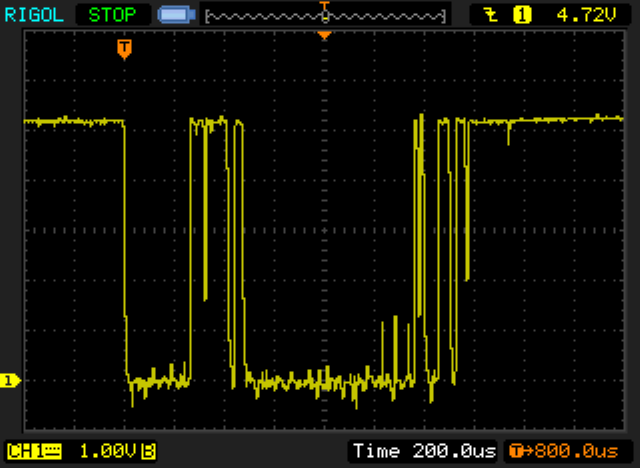
|
|
|
| Back to top |
|
 |
tomblejwas(at)yahoo.com
Guest
|
 Posted: Wed Oct 16, 2013 9:09 am Post subject: Relay for Critical Power Feed Posted: Wed Oct 16, 2013 9:09 am Post subject: Relay for Critical Power Feed |
 |
|
Thanks Eric. I was also missing the inherent redundancy in the bridge diode. If the diode through which current is flowing fails, switching to the other power source (if it isn't already on) restores current. The two buses might be connected, but that would not prevent power to the critical component.
I will save the relay arrangement I described for switching between my fuel pumps. If both are inadvertently energized, the pressure will exceed the capabilities of my fuel regulator. The relay arrangement will prevent that.
Tom
Sent from my iPad
| | - The Matronics AeroElectric-List Email Forum - | | | Use the List Feature Navigator to browse the many List utilities available such as the Email Subscriptions page, Archive Search & Download, 7-Day Browse, Chat, FAQ, Photoshare, and much more:
http://www.matronics.com/Navigator?AeroElectric-List |
|
|
|
| Back to top |
|
 |
Eric M. Jones
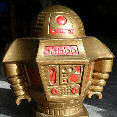
Joined: 10 Jan 2006
Posts: 565
Location: Massachusetts
|
 Posted: Wed Oct 16, 2013 9:32 am Post subject: Re: Relay for Critical Power Feed Posted: Wed Oct 16, 2013 9:32 am Post subject: Re: Relay for Critical Power Feed |
 |
|
I claim this is a better way to go and have sold lots of these to Aeroelectric builders doing Z-19
http://www.periheliondesign.com/powerschottkydiodes.htm
| | - The Matronics AeroElectric-List Email Forum - | | | Use the List Feature Navigator to browse the many List utilities available such as the Email Subscriptions page, Archive Search & Download, 7-Day Browse, Chat, FAQ, Photoshare, and much more:
http://www.matronics.com/Navigator?AeroElectric-List |
|
_________________
Eric M. Jones
www.PerihelionDesign.com
113 Brentwood Drive
Southbridge, MA 01550
(508) 764-2072
emjones(at)charter.net |
|
| Back to top |
|
 |
tomblejwas(at)yahoo.com
Guest
|
 Posted: Thu Oct 17, 2013 5:41 pm Post subject: Relay for Critical Power Feed Posted: Thu Oct 17, 2013 5:41 pm Post subject: Relay for Critical Power Feed |
 |
|
Yes, this does look like a better choice for the feed to my ECU. For my fuel pumps, I think having each pump connected to a different engine bus is a simpler way to go.
Tom
Sent from my iPad
| | - The Matronics AeroElectric-List Email Forum - | | | Use the List Feature Navigator to browse the many List utilities available such as the Email Subscriptions page, Archive Search & Download, 7-Day Browse, Chat, FAQ, Photoshare, and much more:
http://www.matronics.com/Navigator?AeroElectric-List |
|
|
|
| Back to top |
|
 |
nuckolls.bob(at)aeroelect
Guest
|
 Posted: Sat Oct 19, 2013 10:54 am Post subject: Relay for Critical Power Feed Posted: Sat Oct 19, 2013 10:54 am Post subject: Relay for Critical Power Feed |
 |
|
At 02:24 AM 10/15/2013, you wrote:
| Quote: | Following up on automotive relays.
|
<snip>
Good data sir! Thank you.
Bob . . .
| | - The Matronics AeroElectric-List Email Forum - | | | Use the List Feature Navigator to browse the many List utilities available such as the Email Subscriptions page, Archive Search & Download, 7-Day Browse, Chat, FAQ, Photoshare, and much more:
http://www.matronics.com/Navigator?AeroElectric-List |
|
|
|
| Back to top |
|
 |
nuckolls.bob(at)aeroelect
Guest
|
 Posted: Sat Oct 19, 2013 10:54 am Post subject: Relay for Critical Power Feed Posted: Sat Oct 19, 2013 10:54 am Post subject: Relay for Critical Power Feed |
 |
|
<snip>
Relays sat stationary on the bench during tests. Vibration in real-world use would almost certainly alter these results just bit.
Next I did a very unscientific check of holding force. I crimped PIDG fast-on connectors to two wires and connected them to the normally open relay contacts. I fed 5V from a power supply, through a 100k resistor, through these wires, with an oscilloscope probe attached across the resistor. I set the relay coil voltage from another power supply at 14.0V, so that the relay closed and the scope displayed a constant 5V DC. I set the scope to trigger on a falling slope at 4.7V. I then slapped the relay against the bench top in every direction except pins-down, until the contacts bounced. A typical bounce waveform is attached. I have no idea how many g it took to bounce the contacts, but it was a pretty solid smack. Certainly much more severe than any turbulence I care to encounter!
Eric
I delayed joining this thread because I recalled
a conversation we had here on the List some time
back about contactors opening up under vibration . . .
actually shock.
That conversation spooled up after a builder posted
a note stating that while working on his
airplane, battery-only, he dropped a tool on his
battery contactor and the EFIS rebooted. He repeated
the experiment several times and then came to the
List to inquire into the suitability of this device
to its intended task.
Of course, many tens of thousands of this style
contactor had been used as battery master control
on light airplanes for close to a century. Several
companies offered similar products but most notably,
White-Rodgers/Stancore and Cole-Hersee. The builder's
problem presented in a Cole-Hersee part he had
purchased from Van's.
I had an exemplar C-H part which I set up on the bench
not unlike Eric's experiment above. I was astounded to discover
that what I thought was a relatively light tap with a
box-wrench caused a demonstrable discontinuity in the
contactor's conductivity.
Hmmmm . . . bad contactor? I was selling W-R/S contactors
at the time so I put one of those on the same test set up
and guess what? It did it too.
"Holy contacts Batman, how can this be?"
After some thought I came to two understandings about
the nature of this phenomenon. First, striking the steel
enclosure of the contactor with a steel tool was a
shock force. In terms of g-levels it could have easily
reached the big numbers. Certainly 10Gs and 100G would
not have surprised me.
Second, why did this not manifest before? Answer, it HAD,
many, many times over the decades. But all of the
applications that made these contactors popular DID NOT
feature solid state electronics . . . particularly
fitted with microprocessors that would re-set on
microsecond notice.
Then the lights came on. At some time toward the end
of my tenure in the sales of contactors, W-R/S modified
their 70 series devices to add plastic booties over
the mounting feet.
[img]cid:.0[/img]
I wrote to W-R/C and called a rep to see if I could
get an explanation for why those 'insulators' were
added to the mounting. Never got a satisfactory
answer . . . in fact never got any answer.
But I'll be you $5 to your donut (used to be
a dollar . . . but you know . . . inflation),
that some new electric vehicle with modern,
CPU driven controls demonstrated the same phenomenon
reported by our brother builder in his
airplane. The good folks at W-R/S couldn't do a thing
about failure of some manufacturer to do DO-160
style qualification to his fork lift controller
. . . the next best thing was to modify the contactor
for better resistance to hi-G pulses or shock.
Of course, hitting the contactor with a wrench
continues to produce the same demonstrable dis-
continuity. The difference being that the same
shocks delivered through the mounting feet are less
likely to interrupt the flow of power through
the contactor.
What's the likelihood of delivering such 10+
G shock to the contactor in your airplane?
VERY low, hence the exemplar service life of
this device in airplanes . . . even machines
fitted with electronics having twitchy reset
characteristics.
Nonetheless, the discovery was a surprise. At the
time I was engaged in some relay life issues at
Hawker-Beech and this discovery on the contactors
prompted some explorations into smaller relays . . .
particularly some mil-spec devices. Guess what?
They do it too.
I couldn't find the data plots I took on the contactor
experiments. If I run across them in the future, I'll
re-post this note alone with the data. I don't
think I recorded any data on the $high$ relays,
those investigations were never formally reported.
Bottom line is that shock . . . fast rise, short duration
high intensity transients are a special kind of
vibration that gets spec'ed separately from the
shake, rattle and roll of the airframe. This further
emphasizes the need for good practice in the design
of input power conditioning for particularly
vulnerable avionics. Design practice that should
happen INSIDE the box at the factory . . . not
outside the box at the airplane.
So the short answer to the topic question of this
thread is, yes . . . plain vanilla contactors
and relays are just as suited to control "critical"
power as they ever were. The companion question is
whether or not the designers of potentially vulnerable
systems understood and considered the wild-and-wooly
nature of DC power systems in all manner of vehicle.
I have referred numerous non-aviation clients to
DO-160 as a set of exemplar guidelines for successful
marketing of a new product.
Bob . . .
| | - The Matronics AeroElectric-List Email Forum - | | | Use the List Feature Navigator to browse the many List utilities available such as the Email Subscriptions page, Archive Search & Download, 7-Day Browse, Chat, FAQ, Photoshare, and much more:
http://www.matronics.com/Navigator?AeroElectric-List |
|
| Description: |
|
| Filesize: |
57.77 KB |
| Viewed: |
11236 Time(s) |
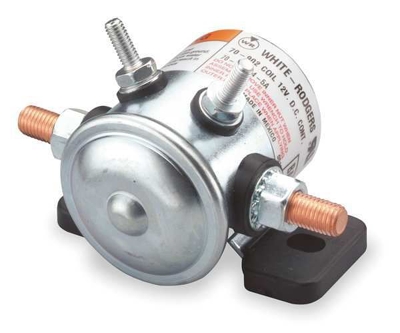
|
|
|
| Back to top |
|
 |
Eric M. Jones

Joined: 10 Jan 2006
Posts: 565
Location: Massachusetts
|
 Posted: Sun Oct 20, 2013 5:18 am Post subject: Re: Relay for Critical Power Feed Posted: Sun Oct 20, 2013 5:18 am Post subject: Re: Relay for Critical Power Feed |
 |
|
Don't use Type-70 Stancore-White-Rodgers-Emerson-Tyco contactors in your aircraft. The reasons are plentiful: They have a 122 deg F maximum ambient. They are not water or fuel proof, they won't open against high currents or voltages. They are position sensitive and have low G-withstands. Disregard the fact that they have been used and failing for many years. There are better ways to go. Bob N. and I have argued this for years. Here are some excerpts from the archives:
So the manufacturer says, "mount plunger vertical, cap down". I checked
into the engineering data on this part and of course the corporate
conglomeratization has destroyed the engineering knowledge that built the
part. The manufacturer PROMISED they'd get back to me.....BUT It's not DO-160 bubela. And it's only 122 deg F max operating temp. Etc. etc.
I spent many hours tracking down the designers of this Stancor-White-Rogers Emerson Tyco Type-70. The only info that remains available seems to be the present specs. The available newly produced Type-70 specs simply make it unsuitable. Will it work, Yes. Will it fail? Yes, sooner than you'd like. It is entirely possible that Cessna had a custom model. Is Cessna still using these? Possibly, but certificated a/c tend to use old original technology until it bleeds. There's no reason you should follow them.
The Kilovac Czonkas II's are made in many types. There is a marine model too that is perfectly usable. (Blue Sea Systems p/n 9012) But I don't have stock in Kilovac. There are many makers of newer stuff [Gigavac has come out with similar contactors].
For my airplane, I'll use a Flaming River Battery switch if I can, and an EV200 otherwise....
ps: Guess how Kilovac and Gigavac clamp coil voltages generated from the collapsing magnetic field? That's right...internal bidirectional zeners.
"Everything you've learned in school as "obvious" becomes less and less
obvious as you begin to study the universe. For example, there are no
solids in the universe. There's not even a suggestion of a solid. There
are no absolute continuums. There are no surfaces. There are no straight
lines."
- R. Buckminster Fuller
| | - The Matronics AeroElectric-List Email Forum - | | | Use the List Feature Navigator to browse the many List utilities available such as the Email Subscriptions page, Archive Search & Download, 7-Day Browse, Chat, FAQ, Photoshare, and much more:
http://www.matronics.com/Navigator?AeroElectric-List |
|
_________________
Eric M. Jones
www.PerihelionDesign.com
113 Brentwood Drive
Southbridge, MA 01550
(508) 764-2072
emjones(at)charter.net |
|
| Back to top |
|
 |
nuckolls.bob(at)aeroelect
Guest
|
 Posted: Sun Oct 20, 2013 6:59 am Post subject: Relay for Critical Power Feed Posted: Sun Oct 20, 2013 6:59 am Post subject: Relay for Critical Power Feed |
 |
|
At 08:18 AM 10/20/2013, you wrote:
| Quote: | --> AeroElectric-List message posted by: "Eric M. Jones" <emjones(at)charter.net>
Don't use Type-70 Stancore-White-Rodgers-Emerson-Tyco contactors in your aircraft. The reasons are plentiful: They have a 122 deg F maximum ambient. They are not water or fuel proof, they won't open against high currents or voltages. They are position sensitive and have low G-withstands. Disregard the fact that they have been used and failing for many years. There are better ways to go. Bob N. and I have argued this for years. Here are some excerpts from the archives: |
"Better" is non quantitative. Just a few weeks ago
I received a failed, 70-series contactor removed from
a 70's model Cessna. The owner believed that it was
the original contactor. We did a tear down and discovered
that indeed, the contacts had become intermittent due
to corrosion on contacts exacerbated by ingress of moisture.
Mechanically the device was intact and functional . . .
after 30+ years of service.
[img]cid:.0[/img]
Here's the mating set of contacts . . .
[img]cid:.1[/img]
For a device that has been operated for 30+ years
"outside the spec sheet" envelope of limits it looks
pretty good to me. Would this Cessna owner be well
advised to install something "better"?
If "better" means that some other device will not succumb
to moisture (sealed contact chamber) and it has higher
ambient temperature ratings, then yes, this carry-over from
the 1940's has some peers with improvements that have
evolved over time . . . often crafted to meet the needs
of a more antagonistic environment.
But when cherry-picking of features that are "better"
becomes a driving force in our decision making processes,
then other authors on this List could opine that one
should avoid the IO-360 in favor of some newer
technology. Or perhaps we are well advised to abandon
panel mounted switches . . .
We gave up these switches
[img]cid:.0[/img]
in favor of these . . .
[img]cid:.1[/img]
For reasons that are fairly obvious. But consider
the constellation of simple-ideas that come with
the use of this part in your airplane:
[img]cid:.2[/img]
There are 10 new metallic joints added to every
current carrying path by the use of these switches.
That's a fist-full of new opportunities for failure.
But each opportunity for failure is exploited by
environmental conditions and craftsmanship of the
installer.
These switches HAVE suffered some interesting
failures . . .
[img]cid:.3[/img]
Question: Have switches of this genre ever bubbled
to the surface as a hazard so egregious as to generate
an AD against hundreds of thousands of such devices
flying for the past 70 years?
This switch has suffered that dubiou honor . . .
[img]cid:.4[/img]
Every owner of a Baron or Bonanza has a new item
on his/her worry-list due to an un-foreseen deficiency
in the design . . . a deficiency that took decades
of field service before it bubbled up and people-paid-
to-worry took notice.
Even people-paid-to-worry have not banned the humble
ol' workhorse that is the 70-series contactor from
flying aboard airplanes. We can sing the ballad of
dueling specsheets but the bottom line is that this
product has a SERVICE HISTORY that demonstrates it
to be good value. I.e. performance traded against
cost of ownership while being attentive to
increased risks.
Since we're ALL building failure tolerant electrical
systems I can confidently suggest that consideration
of "better" contactors is driven more by our desire to
own and drive a Benz as opposed to a Ford . . . in spite
of the fact that both vehicles have high order
probability of getting us from point A to point B over
15 years and 200,000 miles at low risk . . . but with
markedly different costs of ownership.
Everything Eric has offered is true. The point of
this discussion . . . indeed the point of this List
is to sift the simple-ideas of any recipe for success
and make decisions based on cost of ownership weighed
against risk while sprinkling in some personal
preferences for V-Power or EXP-Bus in with the gaggle
of fuses and toggle switches. Just as S-K vs.
Harbor Freight tools are judged in the marketplace,
the value of a recipe-for success in our airplanes is
demonstrated in the air.
It's not WHAT we choose to use but the UNDERSTANDING
we bring to airplane to keep OPERABILITY high, RISKS
low while fitting COST of ownership to our own bank
accounts. The 70-series contactor has demonstrated
itself not to be a black hat lurking behind a rock
awaiting the opportunity to give you a bad day in the
cockpit. In 50 years of hammering on airplanes I can
confidently assert that the greatest risks for failure
to perform are human factors issues of installation,
maintenance or operation. Failure to perform based
inattention to specifications is VERY low on the list
things cause pilots to break a sweat while airborne.
Failure tolerant design strives to make any failure
a MAINTENANCE and COST OF OWNERSHIP issue as opposed
to a reason for breaking a sweat.
Bob . . .
| | - The Matronics AeroElectric-List Email Forum - | | | Use the List Feature Navigator to browse the many List utilities available such as the Email Subscriptions page, Archive Search & Download, 7-Day Browse, Chat, FAQ, Photoshare, and much more:
http://www.matronics.com/Navigator?AeroElectric-List |
|
| Description: |
|
| Filesize: |
102.5 KB |
| Viewed: |
11219 Time(s) |
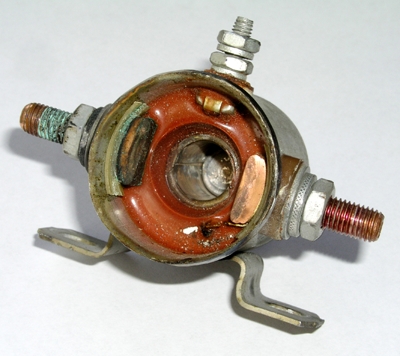
|
| Description: |
|
| Filesize: |
94.05 KB |
| Viewed: |
11219 Time(s) |
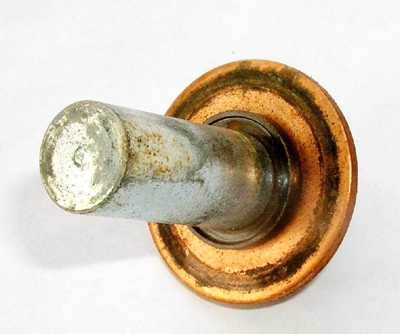
|
| Description: |
|
| Filesize: |
136.24 KB |
| Viewed: |
11219 Time(s) |
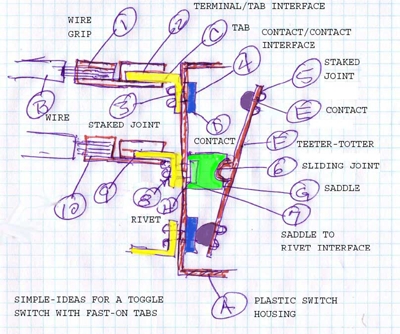
|
| Description: |
|
| Filesize: |
62.17 KB |
| Viewed: |
11219 Time(s) |
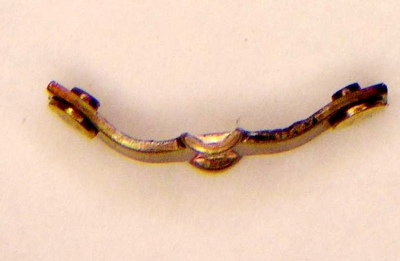
|
| Description: |
|
| Filesize: |
39.79 KB |
| Viewed: |
11219 Time(s) |
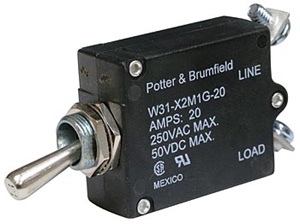
|
|
|
| Back to top |
|
 |
nuckolls.bob(at)aeroelect
Guest
|
 Posted: Sun Oct 20, 2013 7:19 am Post subject: Relay for Critical Power Feed Posted: Sun Oct 20, 2013 7:19 am Post subject: Relay for Critical Power Feed |
 |
|
| Quote: |
I spent many hours tracking down the designers of this
Stancor-White-Rogers Emerson Tyco Type-70.
|
Those guys died years ago . . .
| Quote: | The only info that remains available seems to be the present
specs. The available newly produced Type-70 specs simply make it
unsuitable. Will it work, Yes. Will it fail? Yes, sooner than you'd like.
|
Quantify "sooner" and "like" . . . and lay foundation
for those numbers.
| Quote: | It is entirely possible that Cessna had a custom model.
|
They did not. Everything Cessna purchased in those
days were catalog items folded into the qualified
parts stream by virtue of words and illustrations
on a piece of paper (we called them C-Drawings).
Beech did the same thing on the W-31 breaker-switches.
I did the same thing at Electro-Mech.
But when C-H was selling thousands per year to
Beech and Cessna versus hundreds of thousands per
year to customers unwashed by the FARS, who do you think
drove design decisions?
| Quote: | Is Cessna still using these?
|
I'll have access to Cessna's great data-base-in-the-sky
in a few weeks. I'll see what is being offered as spares
for a 1970 C-172.
| Quote: | Possibly, but certificated a/c tend to use old original technology
until it bleeds.
|
Does the IO-360 bleed? Has the lead-acid
battery been relegated to the pages of
aviation history? Has the incandescent
landing light been pried out and replaced
with LED as a hazard to the airframe and
occupants?
| Quote: | ps: Guess how Kilovac and Gigavac clamp coil voltages generated from
the collapsing
magnetic field? That's right...internal bidirectional zeners.
|
We explored the value of Benz versus Ford style
coil suppression about 13 years ago. I went to the
bench and did qualitative and quantitative measurements
on the differences in performance and benefits derived
therefrom. Did you find errors in either my process,
measurement or reasoning?
http://tinyurl.com/nva2xdy
http://tinyurl.com/25wjo7w
http://tinyurl.com/jwxxav8
Bob . . .
| | - The Matronics AeroElectric-List Email Forum - | | | Use the List Feature Navigator to browse the many List utilities available such as the Email Subscriptions page, Archive Search & Download, 7-Day Browse, Chat, FAQ, Photoshare, and much more:
http://www.matronics.com/Navigator?AeroElectric-List |
|
|
|
| Back to top |
|
 |
Eric M. Jones

Joined: 10 Jan 2006
Posts: 565
Location: Massachusetts
|
 Posted: Sun Oct 20, 2013 7:45 am Post subject: Re: Relay for Critical Power Feed Posted: Sun Oct 20, 2013 7:45 am Post subject: Re: Relay for Critical Power Feed |
 |
|
Your photo of the 30 year old contactor discloses: 30 years ago they looked like they were built better. The one you show is not the same one that is being used now.
I stand my ground: Published specification for the Type-70 contactor say not to use it in the applications for which it is being used. Regardless of the fact that one can get away with it, better solutions are at hand.
| Quote: | Does the IO-360 bleed? Has the lead-acid battery been relegated to the pages of aviation history? Has the incandescent landing light been pried out and replaced with LED as a hazard to the airframe and occupants?
|
Strawman arguments Bob. You can do better.
| | - The Matronics AeroElectric-List Email Forum - | | | Use the List Feature Navigator to browse the many List utilities available such as the Email Subscriptions page, Archive Search & Download, 7-Day Browse, Chat, FAQ, Photoshare, and much more:
http://www.matronics.com/Navigator?AeroElectric-List |
|
_________________
Eric M. Jones
www.PerihelionDesign.com
113 Brentwood Drive
Southbridge, MA 01550
(508) 764-2072
emjones(at)charter.net |
|
| Back to top |
|
 |
Eric M. Jones

Joined: 10 Jan 2006
Posts: 565
Location: Massachusetts
|
 Posted: Sun Oct 20, 2013 8:03 am Post subject: Re: Relay for Critical Power Feed Posted: Sun Oct 20, 2013 8:03 am Post subject: Re: Relay for Critical Power Feed |
 |
|
Attached disassembled Type-70 (minus cap).
| | - The Matronics AeroElectric-List Email Forum - | | | Use the List Feature Navigator to browse the many List utilities available such as the Email Subscriptions page, Archive Search & Download, 7-Day Browse, Chat, FAQ, Photoshare, and much more:
http://www.matronics.com/Navigator?AeroElectric-List |
|
| Description: |
|
| Filesize: |
208.6 KB |
| Viewed: |
11209 Time(s) |
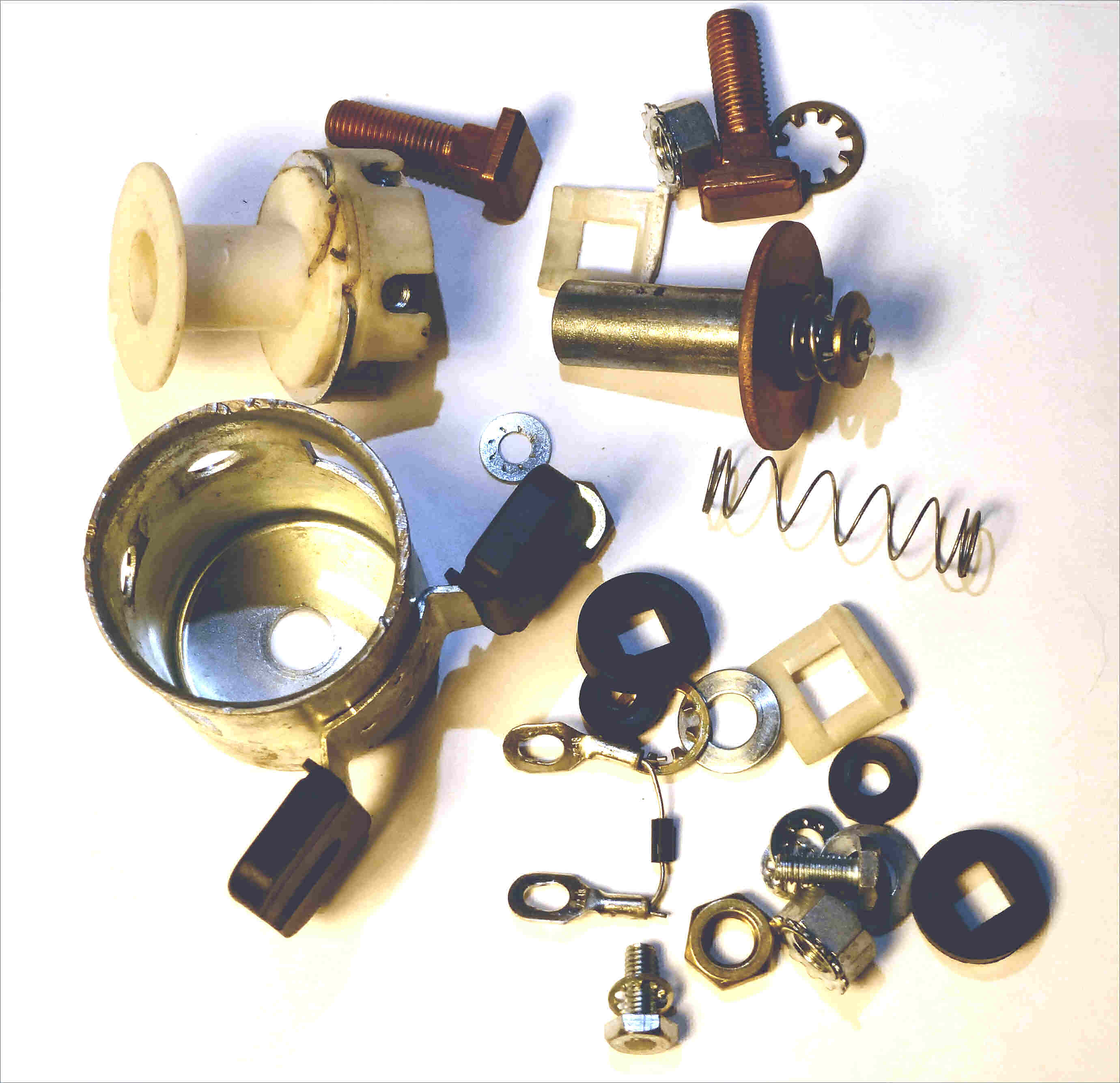
|
_________________
Eric M. Jones
www.PerihelionDesign.com
113 Brentwood Drive
Southbridge, MA 01550
(508) 764-2072
emjones(at)charter.net |
|
| Back to top |
|
 |
Eric M. Jones

Joined: 10 Jan 2006
Posts: 565
Location: Massachusetts
|
 Posted: Sun Oct 20, 2013 8:10 am Post subject: Re: Relay for Critical Power Feed Posted: Sun Oct 20, 2013 8:10 am Post subject: Re: Relay for Critical Power Feed |
 |
|
Attached disassembled Type-70 (minus cap and copper coil). A long cost-cutting way down from the part you show.
| | - The Matronics AeroElectric-List Email Forum - | | | Use the List Feature Navigator to browse the many List utilities available such as the Email Subscriptions page, Archive Search & Download, 7-Day Browse, Chat, FAQ, Photoshare, and much more:
http://www.matronics.com/Navigator?AeroElectric-List |
|
| Description: |
|
| Filesize: |
37.48 KB |
| Viewed: |
11206 Time(s) |
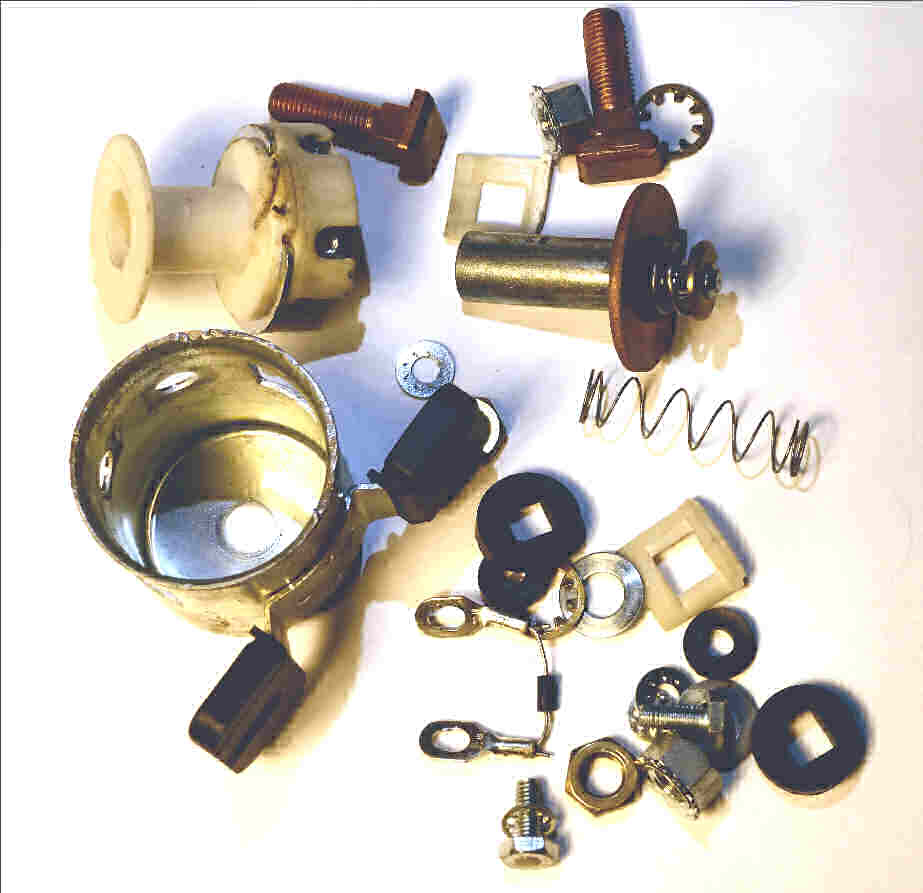
|
_________________
Eric M. Jones
www.PerihelionDesign.com
113 Brentwood Drive
Southbridge, MA 01550
(508) 764-2072
emjones(at)charter.net |
|
| Back to top |
|
 |
nuckolls.bob(at)aeroelect
Guest
|
 Posted: Sun Oct 20, 2013 8:45 am Post subject: Relay for Critical Power Feed Posted: Sun Oct 20, 2013 8:45 am Post subject: Relay for Critical Power Feed |
 |
|
Been having some problems with cut-n-paste between PhotoShop
and my email client . . . the email client doesn't always
keep the ducks lined up. The workaround seems to be to save
the image to hard drive and then import to the email client as
a file . . .
Reposted with corrected images . . .
At 08:18 AM 10/20/2013, you wrote:
| Quote: | --> AeroElectric-List message posted by: "Eric M. Jones" <emjones(at)charter.net>
Don't use Type-70 Stancore-White-Rodgers-Emerson-Tyco contactors in your aircraft. The reasons are plentiful: They have a 122 deg F maximum ambient. They are not water or fuel proof, they won't open against high currents or voltages. They are position sensitive and have low G-withstands. Disregard the fact that they have been used and failing for many years. There are better ways to go. Bob N. and I have argued this for years. Here are some excerpts from the archives: |
"Better" is non quantitative. Just a few weeks ago
I received a failed, 70-series contactor removed from
a 70's model Cessna. The owner believed that it was
the original contactor. We did a tear down and discovered
that indeed, the contacts had become intermittent due
to corrosion on contacts exacerbated by ingress of moisture.
Mechanically the device was intact and functional . . .
after 30+ years of service.
[img]cid:7.1.0.9.0.20131020113308.02102cf0(at)aeroelectric.com.7[/img]
Here's the mating set of contacts . . .
[img]cid:7.1.0.9.0.20131020113308.02102cf0(at)aeroelectric.com.8[/img]
For a device that has been operated for 30+ years
"outside the spec sheet" envelope of limits it looks
pretty good to me. Would this Cessna owner be well
advised to install something "better"?
If "better" means that some other device will not succumb
to moisture (sealed contact chamber) and it has higher
ambient temperature ratings, then yes, this carry-over from
the 1940's has some peers with improvements that have
evolved over time . . . often crafted to meet the needs
of a more antagonistic environment.
But when cherry-picking of features that are "better"
becomes a driving force in our decision making processes,
then other authors on this List could opine that one
should avoid the IO-360 in favor of some newer
technology. Or perhaps we are well advised to abandon
panel mounted switches . . .
We gave up these switches
[img]cid:7.1.0.9.0.20131020113308.02102cf0(at)aeroelectric.com.9[/img]
in favor of these . . .
[img]cid:7.1.0.9.0.20131020113308.02102cf0(at)aeroelectric.com.10[/img]
For reasons that are fairly obvious. But consider
the constellation of simple-ideas that come with
the use of this part in your airplane:
[img]cid:7.1.0.9.0.20131020113308.02102cf0(at)aeroelectric.com.11[/img]
There are 10 new metallic joints added to every
current carrying path by the use of these switches.
That's a fist-full of new opportunities for failure.
But each opportunity for failure is exploited by
environmental conditions and craftsmanship of the
installer.
These switches HAVE suffered some interesting
failures . . .
[img]cid:7.1.0.9.0.20131020113308.02102cf0(at)aeroelectric.com.12[/img]
Question: Have switches of this genre ever bubbled
to the surface as a hazard so egregious as to generate
an AD against hundreds of thousands of such devices
flying for the past 70 years?
This switch has suffered that dubiou honor . . .
[img]cid:7.1.0.9.0.20131020113308.02102cf0(at)aeroelectric.com.13[/img]
Every owner of a Baron or Bonanza has a new item
on his/her worry-list due to an un-foreseen deficiency
in the design . . . a deficiency that took decades
of field service before it bubbled up and people-paid-
to-worry took notice.
Even people-paid-to-worry have not banned the humble
ol' workhorse that is the 70-series contactor from
flying aboard airplanes. We can sing the ballad of
dueling specsheets but the bottom line is that this
product has a SERVICE HISTORY that demonstrates it
to be good value. I.e. performance traded against
cost of ownership while being attentive to
increased risks.
Since we're ALL building failure tolerant electrical
systems I can confidently suggest that consideration
of "better" contactors is driven more by our desire to
own and drive a Benz as opposed to a Ford . . . in spite
of the fact that both vehicles have high order
probability of getting us from point A to point B over
15 years and 200,000 miles at low risk . . . but with
markedly different costs of ownership.
Everything Eric has offered is true. The point of
this discussion . . . indeed the point of this List
is to sift the simple-ideas of any recipe for success
and make decisions based on cost of ownership weighed
against risk while sprinkling in some personal
preferences for V-Power or EXP-Bus in with the gaggle
of fuses and toggle switches. Just as S-K vs.
Harbor Freight tools are judged in the marketplace,
the value of a recipe-for success in our airplanes is
demonstrated in the air.
It's not WHAT we choose to use but the UNDERSTANDING
we bring to airplane to keep OPERABILITY high, RISKS
low while fitting COST of ownership to our own bank
accounts. The 70-series contactor has demonstrated
itself not to be a black hat lurking behind a rock
awaiting the opportunity to give you a bad day in the
cockpit. In 50 years of hammering on airplanes I can
confidently assert that the greatest risks for failure
to perform are human factors issues of installation,
maintenance or operation. Failure to perform based
inattention to specifications is VERY low on the list
things cause pilots to break a sweat while airborne.
Failure tolerant design strives to make any failure
a MAINTENANCE and COST OF OWNERSHIP issue as opposed
to a reason for breaking a sweat.
Bob . . .
| | - The Matronics AeroElectric-List Email Forum - | | | Use the List Feature Navigator to browse the many List utilities available such as the Email Subscriptions page, Archive Search & Download, 7-Day Browse, Chat, FAQ, Photoshare, and much more:
http://www.matronics.com/Navigator?AeroElectric-List |
|
| Description: |
|
| Filesize: |
102.5 KB |
| Viewed: |
11203 Time(s) |
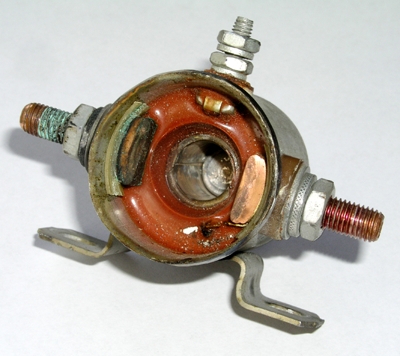
|
| Description: |
|
| Filesize: |
94.05 KB |
| Viewed: |
11203 Time(s) |
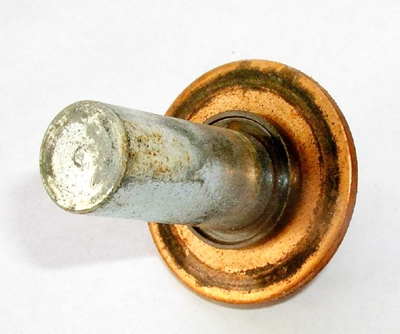
|
| Description: |
|
| Filesize: |
71.45 KB |
| Viewed: |
11203 Time(s) |
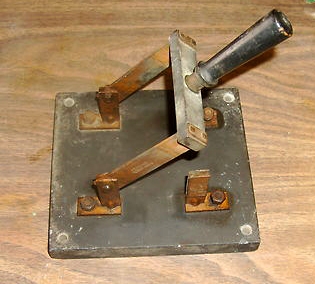
|
| Description: |
|
| Filesize: |
31.74 KB |
| Viewed: |
11203 Time(s) |
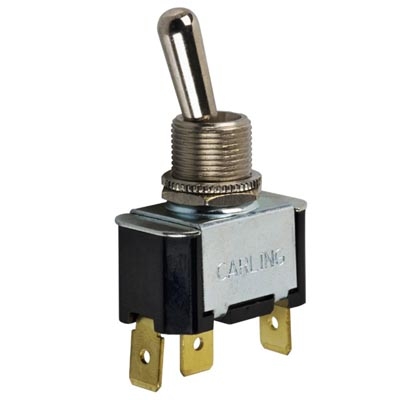
|
| Description: |
|
| Filesize: |
136.24 KB |
| Viewed: |
11203 Time(s) |
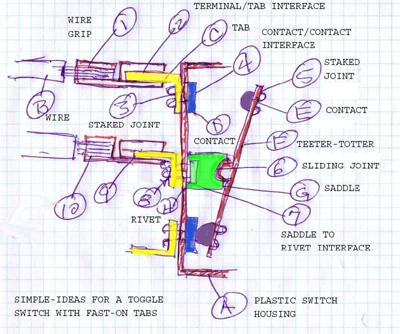
|
| Description: |
|
| Filesize: |
62.17 KB |
| Viewed: |
11203 Time(s) |
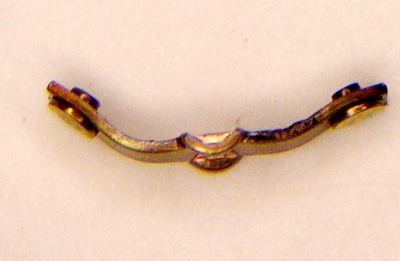
|
| Description: |
|
| Filesize: |
39.79 KB |
| Viewed: |
11203 Time(s) |
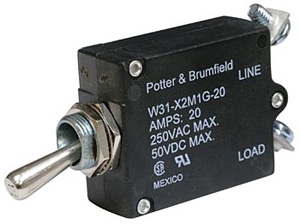
|
|
|
| Back to top |
|
 |
nuckolls.bob(at)aeroelect
Guest
|
 Posted: Sun Oct 20, 2013 11:00 am Post subject: Relay for Critical Power Feed Posted: Sun Oct 20, 2013 11:00 am Post subject: Relay for Critical Power Feed |
 |
|
At 11:10 AM 10/20/2013, you wrote:
| Quote: |
Attached disassembled Type-70 (minus cap and copper coil). A long
cost-cutting way down from the part you show.
|
Really?
Are we privy to the conversations that transpired
during the last 50 years worth of engineering/management/
manufacturing/marketing meetings wherein the design
features of this product like were decided?
I'll invite our readers to review the library of
70 series photos at http://tinyurl.com/kcc26jt
These photos only go back to about 1960 . . . it seems
likely that a 1940 tear-down would show yet other
differences.
I would guess that this product line has
enjoyed a host of cost-cutting changes. Advancements
in materials and automation are nearly always
responsible for reductions in cost and/or improvements
in meeting design goals.
But consider that of the trio of failure teardowns
illustrated in the library of pictures, 2 failures
were the result of assembly error . . . a human
factor I cited earlier today. The third failure
occurred at or beyond any practical expectations
for service life on the product . . . the thing
operated as designed and expired gracefully
(random intermittent). Further it was not a player
in the classic trio of conditions that precede
so many sad events in aviation and elsewhere.
You seem to use the phrase "cost cutting" as
an epithet. I have participated in dozens of
tasks where cost-cutting was a mission
imperative. However, in no instance was degradation
of service life or performance considered a
component of the acceptable solution. More often
than not, the upgrade reduced costs while improving
on the value of the product.
Bob . . .
| | - The Matronics AeroElectric-List Email Forum - | | | Use the List Feature Navigator to browse the many List utilities available such as the Email Subscriptions page, Archive Search & Download, 7-Day Browse, Chat, FAQ, Photoshare, and much more:
http://www.matronics.com/Navigator?AeroElectric-List |
|
|
|
| Back to top |
|
 |
nuckolls.bob(at)aeroelect
Guest
|
 Posted: Sun Oct 20, 2013 11:00 am Post subject: Relay for Critical Power Feed Posted: Sun Oct 20, 2013 11:00 am Post subject: Relay for Critical Power Feed |
 |
|
| Quote: | > Does the IO-360 bleed? Has the lead-acid battery been relegated
to the pages of aviation history? Has the incandescent landing
light been pried out and replaced with LED as a hazard to the
airframe and occupants?
Strawman arguments Bob. You can do better.
|
Okay, strike that paragraph. What about the others?
Bob . . .
| | - The Matronics AeroElectric-List Email Forum - | | | Use the List Feature Navigator to browse the many List utilities available such as the Email Subscriptions page, Archive Search & Download, 7-Day Browse, Chat, FAQ, Photoshare, and much more:
http://www.matronics.com/Navigator?AeroElectric-List |
|
|
|
| Back to top |
|
 |
nuckolls.bob(at)aeroelect
Guest
|
 Posted: Mon Oct 21, 2013 9:00 am Post subject: Relay_for_Critical_Power_Feed Posted: Mon Oct 21, 2013 9:00 am Post subject: Relay_for_Critical_Power_Feed |
 |
|
Fooey,
Seems I'm having difficulties with integration of my
email and image editing tools and the List-Server.
I can email myself and the message comes through as
expected in both Eudora and Outlook . . . but there
appears to be a disconnect with the List Server.
Here's a .pdf of the message with missing images.
I'll get with Matt to see if we can resolve the
issues.
Bob . . .
| | - The Matronics AeroElectric-List Email Forum - | | | Use the List Feature Navigator to browse the many List utilities available such as the Email Subscriptions page, Archive Search & Download, 7-Day Browse, Chat, FAQ, Photoshare, and much more:
http://www.matronics.com/Navigator?AeroElectric-List |
|
| Description: |
|

Download |
| Filename: |
Relay_for_Critical_Power_Feed.pdf |
| Filesize: |
127.28 KB |
| Downloaded: |
319 Time(s) |
|
|
| Back to top |
|
 |
raymondj(at)frontiernet.n
Guest
|
 Posted: Mon Oct 21, 2013 11:53 am Post subject: Relay for Critical Power Feed Posted: Mon Oct 21, 2013 11:53 am Post subject: Relay for Critical Power Feed |
 |
|
| | - The Matronics AeroElectric-List Email Forum - | | | Use the List Feature Navigator to browse the many List utilities available such as the Email Subscriptions page, Archive Search & Download, 7-Day Browse, Chat, FAQ, Photoshare, and much more:
http://www.matronics.com/Navigator?AeroElectric-List |
|
|
|
| Back to top |
|
 |
raymondj(at)frontiernet.n
Guest
|
 Posted: Mon Oct 21, 2013 12:27 pm Post subject: Relay_for_Critical_Power_Feed Posted: Mon Oct 21, 2013 12:27 pm Post subject: Relay_for_Critical_Power_Feed |
 |
|
Bob,
FYI, The email you attached as a PDF came through to me as an email without any problems.
do not archive
| Quote: | Raymond Julian
Kettle River, MN.
"And you know that I could have me a million more friends,
and all I'd have to lose is my point of view." - John Prine |
On 10/21/2013 11:58 AM, Robert L. Nuckolls, III wrote:
[quote]Fooey,
Seems I'm having difficulties with integration of my
email and image editing tools and the List-Server.
I can email myself and the message comes through as
expected in both Eudora and Outlook . . . but there
appears to be a disconnect with the List Server.
Here's a .pdf of the message with missing images.
I'll get with Matt to see if we can resolve the
issues.
Bob . . . [b]
| | - The Matronics AeroElectric-List Email Forum - | | | Use the List Feature Navigator to browse the many List utilities available such as the Email Subscriptions page, Archive Search & Download, 7-Day Browse, Chat, FAQ, Photoshare, and much more:
http://www.matronics.com/Navigator?AeroElectric-List |
|
|
|
| Back to top |
|
 |
|
|
You cannot post new topics in this forum
You cannot reply to topics in this forum
You cannot edit your posts in this forum
You cannot delete your posts in this forum
You cannot vote in polls in this forum
You cannot attach files in this forum
You can download files in this forum
|
Powered by phpBB © 2001, 2005 phpBB Group
|


















